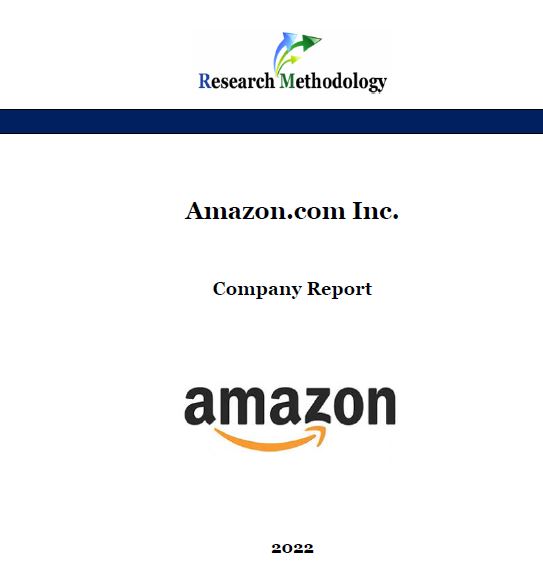Amazon.com Inc. Report 2022
$19.75
Amazon.com Inc. was founded in 1994 in Washington and Amazon.com as a website became first active in July 1995 to become the largest online retailer in the world to offer Earth’s Biggest Selection in less than two decades. The e-commerce and cloud computing company generated revenues of USD 386 billion and earned a net income of USD 21.3 billion in 2020 alone.[1]
The e-commerce giant employs approximately 1,3 million full-time and part-time employees referred to as Amazonians.[2] Amazon has declared its adherence to four principles: customer obsession rather than competitor focus, passion for invention, commitment to operational excellence and long-term thinking. These principles represent sources of Amazon’s competitive advantage.
Amazon business strategy is a hybrid of cost leadership and business diversification. The online retailer also benefits from encouraging communication between various elements within its ecosystem and promotion of its leadership principles consisting of 16 points discussed in this report. The founder and former CEO Jeff Bezos prefers to base business strategy on things that do not change. Specifically, consumers will always want low prices, variety and speedy delivery of their orders. Amazon focuses on these facts via effective integration of information technology into various business processes.
Combination of pragmatist, visionary and autocratic leadership styles are exercised at various levels at Amazon. The company has a hierarchical organizational structure. Nevertheless, it remains highly flexible to adapt to frequent changes in the external marketplace. Amazon organizational culture, on the other hand, is based on the principles of high level of cost-consciousness, constant reinvention and improvement of organizational culture and customer obsession.
Major weaknesses associated with Amazon include seasonality of the business, low profit margins and lack of focus on specific product or service categories. Moreover, a weak competitive position of Amazon’s Fire Phone and damage to the brand image due to tax avoidance scandal in the UK can be listed as weaknesses of Amazon. Furthermore, harsh working conditions for warehouse employees is a noteworthy weakness for the tech giant.
Amazon.com Inc. Report contains the application of the major analytical strategic frameworks in business studies such as SWOT, PESTEL, Porter’s Five Forces, Value Chain analysis, Ansoff Matrix and McKinsey 7S Model on Amazon. Moreover, the report contains analyses of Amazon business strategy, leadership and organizational structure and ecosystem. The report also analysis marketing strategy, ecosystem and discusses the issues of corporate social responsibility.
Description
Amazon.com Inc. was founded in 1994 in Washington and Amazon.com as a website became first active in July 1995 to become the largest online retailer in the world to offer Earth’s Biggest Selection in less than two decades. The e-commerce and cloud computing company generated revenues of USD 386 billion and earned a net income of USD 21.3 billion in 2020 alone.[1]
The e-commerce giant employs approximately 1,3 million full-time and part-time employees referred to as Amazonians.[2] Amazon has declared its adherence to four principles: customer obsession rather than competitor focus, passion for invention, commitment to operational excellence and long-term thinking. These principles represent sources of Amazon’s competitive advantage.
Amazon business strategy is a hybrid of cost leadership and business diversification. The online retailer also benefits from encouraging communication between various elements within its ecosystem and promotion of its leadership principles consisting of 16 points discussed in this report. The founder and former CEO Jeff Bezos prefers to base business strategy on things that do not change. Specifically, consumers will always want low prices, variety and speedy delivery of their orders. Amazon focuses on these facts via effective integration of information technology into various business processes.
Combination of pragmatist, visionary and autocratic leadership styles are exercised at various levels at Amazon. The company has a hierarchical organizational structure. Nevertheless, it remains highly flexible to adapt to frequent changes in the external marketplace. Amazon organizational culture, on the other hand, is based on the principles of high level of cost-consciousness, constant reinvention and improvement of organizational culture and customer obsession.
Major weaknesses associated with Amazon include seasonality of the business, low profit margins and lack of focus on specific product or service categories. Moreover, a weak competitive position of Amazon’s Fire Phone and damage to the brand image due to tax avoidance scandal in the UK can be listed as weaknesses of Amazon. Furthermore, harsh working conditions for warehouse employees is a noteworthy weakness for the tech giant.
Amazon.com Inc. Report contains the application of the major analytical strategic frameworks in business studies such as SWOT, PESTEL, Porter’s Five Forces, Value Chain analysis, Ansoff Matrix and McKinsey 7S Model on Amazon. Moreover, the report contains analyses of Amazon business strategy, leadership and organizational structure and ecosystem. The report also analysis marketing strategy, ecosystem and discusses the issues of corporate social responsibility.

